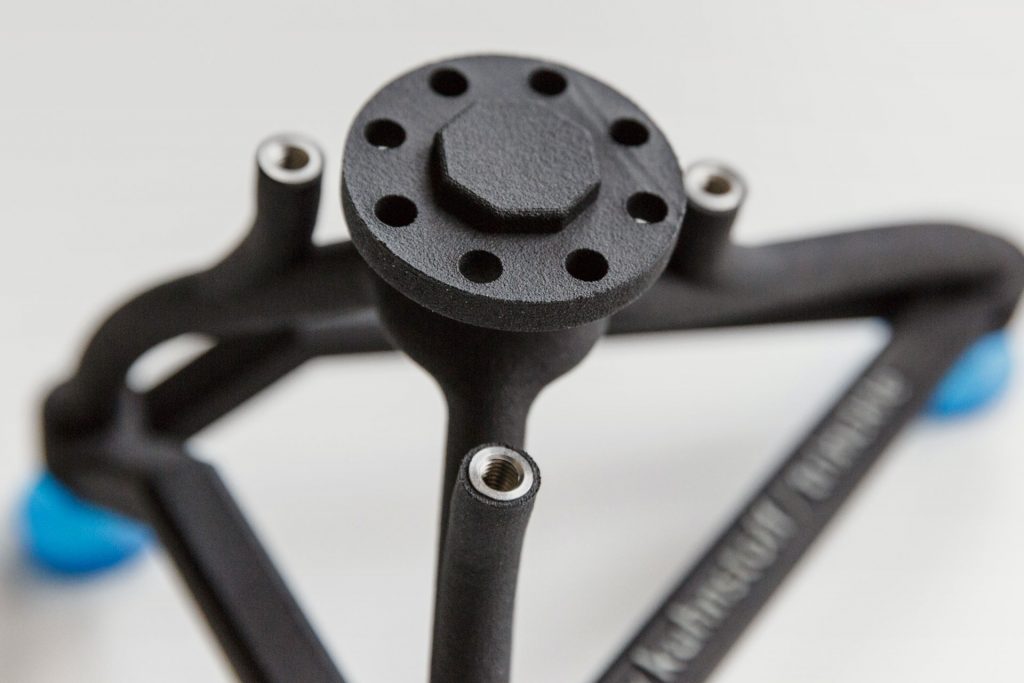This is a guest post in our series looking at the future of 3D Printing. To celebrate 5 years of reporting on the 3D printing industry, we’ve invited industry leaders and 3D printing experts to give us their perspective on the next 5 years of 3D printing.
Florian Reichle is the CEO of trinckle 3D GmBH, who provide software solutions for the 3D printing industry. Trinckle’s customization software, paramate, automates the design of any product.
3D Printing: The next 5 years by Florian Reichle
Software and 3D printing will sound the death knell of mass production
3D printing can no longer be considered as a niche technology, and impressive developments in hardware mean that 3D printing now rivals conventional production methods. Moreover, it has allowed businesses to realize previously unthinkable products and business models. But, 3D printers alone will not enable businesses to leverage the full potential of this technology.
Anyone can buy a printer. In order to really get the most from additive production methods, businesses will need to integrate powerful software, capable of capitalizing on the significant design benefits of 3D printing. It is this interaction between software and design that will bring the most change, and most benefits, for businesses in the next 5 years.

Design automation: The software of custom products
Customization is a great example of the necessity of software. One of the main drivers of 3D printing is customization. In a recent survey, 41% of businesses identified customization as the main advantage of 3D printing (E&Y, 2016). And, thanks to 3D printing, the old dream of producing custom products costefficiently can come true.
This has led many to explore new opportunities like: perfectly fitting glasses, custom robotic components, or individually-tailored prosthetics. In every industry, 3D printing has opened the door to revolutionary design possibilities. However, one major hurdle remains: custom products demand custom designs. And, how should businesses create these individual designs without a lot of manual design work? They need software that goes further than typical CAD programs to automate design processes.
Software has always been a central element of additive production processes. Designers and engineers use CAD software to generate the necessary 3D model. This manual design process makes sense when you are producing 100,000 identical products once the design is finalized. But, the practicality breaks down when it comes to custom products. The time and cost constraints of manual design make it unfeasible for most business models.

Take for example the design and manufacture of custom robotic grippers. This design process is far from simple. An experienced engineer needs up to 8 hours to complete a single design, and has to balance factors like: lightweight construction, stability, height constraints, and the path of internal airways.
When software, like our customization platform paramate, is used this same design task is largely automated and takes only a few seconds. The ability to reimagine design processes will mean major changes not only for individual businesses, but also entire industries.
The digital inventory
Eyewear provides a great example of the possible industry-wide change automated design software will trigger. Imagine getting a new pair of glasses. You select a frame from a digital inventory on your optician’s tablet. The optician then scans your face.
Using this scan data, design software adapts the frame automatically to your face, and allows you to adjust certain aesthetic elements. Your optician orders the custom frames, and in a matter of days you have your glasses. Without software for automatic fitting, no one could afford these new glasses.
The addition of this kind of software to the mix has considerable benefits for everyone involved. Opticians can avoid having to stock standard frames and can offer a new USP, the wearer gets the pair of glasses that fits their style and face perfectly, and manufacturers or designers can look at design changes to guide the further development of their products.
This kind of software means a rethinking of how we interact with products, and makes product design accessible without requiring CAD expertise.

Challenges and changes along the way
Automated design software and 3D printing are set to fundamentally change products and, as we’ve seen, entire industries. Naturally, there will be challenges to overcome. When it comes to customization and the possible applications of software, a significant challenge will be opening up to new opportunities and welcoming in innovative forces.
Businesses will have to adapt to a new design paradigm. Instead of seeing static products, once designed then sold en masse, businesses have to consider dynamic products. Having the tools to produce in new ways is one thing, knowing what this truly means for your products is another.
3D printing has opened the door to new design possibilities. Perhaps the most important of those being customization. Just as hardware has evolved, the software that fuels the entire process must change too. In the age of additive manufacturing, software will be critical to success.
With the right software tools in place, there is no limit to what businesses can achieve.
This is a guest post in our series looking at the future of 3D Printing, if you’d like to participate in this series then contact us for more information. For more insights into the 3D printing industry, sign up to our free newsletter and follow our active social media channels.
More information about trinckle is available here.
Don’t forget that you can vote now in the 1st annual 3D Printing Industry Awards.
Click here to read other articles in our thought leadership series, 3D Printing: The Next Five Years.
Featured image shows trinckle’s customization software. Paramate, automates the design of any product. Photo via trinckle.


